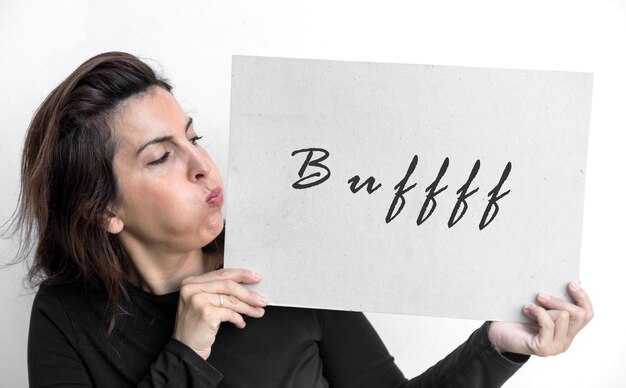We aren’t wounded by what we don’t know so much as by what we refuse to acknowledge — a line Carl Young once said. Anyone who’s loved someone with an avoidant attachment pattern knows exactly how that plays out. One moment they’re affectionate, sending sweet morning messages and making you feel like the only person in the room; the next, they vanish into silence with no fight, no explanation. Your mind starts racing. Did I say something wrong? Did I do something to push them away? You replay conversations, scroll through past messages, hunting for the instant everything fell apart. What people rarely explain is this: that silence isn’t always cold indifference — sometimes it’s a survival reflex. They aren’t withdrawing because they don’t care; they’re stepping back because intimacy terrifies them. Over the next 30 minutes, the five uncommon ways avoidance actually shows care will be laid out, along with how to respond so you don’t drive them back behind those defenses forever. Picture the highs and lows: a night of laughter, shared jokes, holding hands on the walk to the car; you part ways, exchange a quick “goodnight” text and wake up to a different tone — messages are clipped, they claim to be too busy, warmth evaporates like a switch was flipped. Anyone who’s loved an avoidant knows this roller coaster well — one week closeness, the next week a ghost. The abruptness is brutal: feeling desired one moment and doubting everything the next, and then self-blame sets in. So efforts escalate: more texts, repeated reassurances, frantic attempts to pull them back. But here’s the cruel catch — the more you pursue, the farther they retreat. That pattern isn’t proof of a lack of feeling; it’s proof that intimacy registers as danger to them. Their defensive barriers aren’t erected to punish a partner but to protect a vulnerable self. The crucial skill is spotting the rare instances when those defenses actually lower. When that happens and it’s recognized and handled well, the doorway stays open instead of slamming shut. Imagine that the person who keeps creating distance might in reality care more than it seems — their disappearances are often panic reactions, not rejections. Avoidants come with a private emotional vocabulary; without learning how to read it, their gestures look icy when they’re really terrified of how deeply they feel. That’s why understanding the next five subtle signs matters: they aren’t dramatic declarations of love or cinematic showstoppers, but quiet, easy-to-miss moments that mean everything to someone who’s spent a lifetime protecting themselves. Miss them, and you can accidentally push them straight back into retreat — these moments are fragile. The five signs, why they’re so uncommon, and the correct responses will be explained, drawing on attachment theory, relationship psychology, and countless real conversations with people who’ve loved avoidants and felt the sting of withdrawal. If the relationship has felt like a push-pull — close one day, gone the next — a framework will be provided that clarifies their behavior and helps you navigate it without losing yourself. Grab a pen: once these signals are understood, your view of the relationship will shift. Before listing the five signs, it’s essential to grasp why they’re scarce. That root knowledge helps stop taking distance personally and highlights how significant it is when someone actually leans in. Think of an avoidant’s heart as a fortress — not a low fence but high stone walls, heavy gates and layered locks, each brick often set long ago, many in childhood. For many avoidants, lessons landed early: cries dismissed with “Stop it, you’re fine,” expressions of hurt met with “Be strong, don’t bother others with your feelings,” or love that felt conditional — warm when expectations were met, cold when they weren’t. A child in that world learns quickly: showing feeling equals danger, so the only workable strategy becomes concealment. Over time more layers are added — locks, tunnels, escape routes — all designed to avoid the gut-wrench of rejection. That’s why intimacy triggers an alarm in their body: not mere discomfort, but a full nervous-system reaction with racing heart, tense muscles and a brain signaling escape. So when someone with that wiring does let a sliver of vulnerability through, it’s a rebellion against their built-in survival instincts. Spotting any of these five signs means witnessing them remove a brick from that fortress — a rare occurrence indeed. Sign one: they share something personal. In most relationships people trade stories freely, but for an avoidant disclosing something real is deliberate and risky — like handing over the vault key and holding their breath to see if it will be respected. A typical scene might be a quiet moment in a car, music low, when they reveal a childhood memory never previously mentioned — not a funny anecdote but a painful one: waiting at school for a parent who never came, or the first hard lesson that showing who they truly are was met with disapproval. That isn’t casual conversation; avoidants don’t air that stuff lightly because those memories were once tied to hurt. If they share it, they’ve evaluated you and decided you might be safe. Many people blow that chance by firing off questions — Why didn’t you tell me earlier? What else happened? How did you feel? — which feels like a spotlight and drives an avoidant back in. The correct response is to let the moment exist: look them in the eye and say a simple, “Thank you for telling me. I know that wasn’t easy.” That quiet reassurance protects the vulnerable moment and increases the odds of another brick being removed. Sign two: they return after withdrawing. Anyone familiar with this dynamic recognizes the pattern — everything seems fine, then without clear cause they grow distant, replies lag for hours or days, calls go unanswered, leaving a sinking feeling. Retreat is often an involuntary reflex for avoidants — like yanking a hand from heat — triggered by the nervous system when closeness feels overwhelming. Coming back, then, is not automatic; it’s a choice. Whether it’s a brief text, “Hey, how have you been?” or turning up at a favorite coffee spot, returning is a quiet act of courage, a bet that the fear of losing you is stronger than the impulse to escape. The way the return is received matters: do not treat it as a trial by confronting them with a complaint or sarcasm; that will teach their brain that reappearing equals danger and discourage future attempts. Instead, respond warmly but neutrally — “Good to hear from you” — which keeps the door open without excusing the absence. For an avoidant, coming back is bravery; meeting that with calm welcome increases the chance they’ll try again. Sign three: they initiate closeness. This isn’t limited to sex; any closeness they instigate — a physical gesture or emotional reach — carries enormous weight. When closeness has been experienced as threatening, physical and emotional proximity are like walking a tightrope; one misstep and the alarm blares. If the usual pattern has been that you’re the one to reach for hands, hugs, and deeper conversations, then moments when they’re the initiator — sitting closer on the couch, wrapping an arm around you from behind while cooking, resting a head on your shoulder or texting late with “I miss you” — are significant. In those seconds they’re overriding the internal alarm wired long ago. The helpful reaction is to accept the closeness without overanalyzing, teasing, or pushing for a premature “are we serious?” talk. Meet the gesture with warmth — return the hug, squeeze their hand, smile and keep going. Those small, uncomplicated responses teach them closeness doesn’t have to mean loss of self, and repeated positive experiences can make such moments more common. Sign four: a sincere apology. Not a perfunctory, muttered “sorry,” but a full, accountable apology: eye contact, ownership of the mistake and no immediate defense. For someone with avoidant tendencies, apologizing is huge because it means lowering a shield that protected them from shame as a child. If admitting a mistake once invited judgment or withdrawal, a child learns to avoid admission altogether and instead deflect, change the subject, or get defensive. When an avoidant offers a real apology — “I’m sorry I didn’t call back; I know that hurt you” or “I was wrong to shut down” — they’ve overridden a deep-seated defense. The way that apology is handled will determine whether it becomes repeatable. Gloating, piling on, or weaponizing the apology will teach them that vulnerability equals danger and drive them away. Instead, accept it gracefully: acknowledge the apology, hold boundaries, and save the deeper conversation for later. A simple, “I appreciate you saying that,” validates the risk they’ve taken and helps build the trust foundation they’re slowly assembling. Sign five: they show steady consistency. For most people, consistency is simply normal. For an avoidant, however, it’s not natural — they’re wired for push-pull. Safety draws them close; pressure drives them away. So when someone who usually alternates between presence and absence begins to show up reliably — texting first, remembering important dates, following through on plans, arriving on time, checking in unprompted — each small act is a deliberate choice and an act of trust. These ordinary behaviors are emotional investments for them; each fulfilled promise tells their inner system, “Staying here is safe.” Consistency can’t be forced with ultimatums, guilt or demands — that will only provoke compliance out of fear and trigger retreat. Genuine steadiness arrives when they choose to be present because they want to, not because they feel coerced. When the effort is noticed and quietly acknowledged — “Thanks for checking in, that meant a lot” — it reinforces the new pattern and helps replace the old push-pull cycle. When an avoidant becomes reliably present, the relationship shifts: the partner moves from being “just someone” to becoming a chosen safe place. With the five signals now explained, the next question is how to respond so those openings become gateways, not reasons to bolt. Four rules are crucial: First, don’t interrogate. Resist immediate probing when someone shares; questions like “Why now?” or “Why tell me?” feel intrusive and will shut them down. A simple “Thank you for sharing that” suffices. Second, don’t rush the process. Vulnerability is delicate; forcing a leap before they’re ready causes panic and retreat. Allow them to set the pace and accept small steps. Third, acknowledge and appreciate. Vulnerable moments are limited emotional currency for an avoidant; if they give some of it, treat it as precious. Say things like, “I know that wasn’t easy to share,” or “It means a lot you came back.” Small affirmations build trust. Fourth, safeguard their trust. Nothing closes the door faster than weaponizing someone’s vulnerability during conflict. Even honest comments that feel like betrayal to them will raise the defenses higher than before. This approach isn’t about walking on eggshells or ignoring personal needs; it’s about creating a space where both partners can be honest without fear. The goal is not to fix the other person but to be the place where they feel secure enough to do their own work. When these moments are handled well, openings become more frequent until the wall isn’t as tall anymore. It’s also vital to reframe what each of these signs represents: every time an avoidant opens up, returns after distance, initiates closeness, apologizes, or becomes reliable, it’s not merely a relational milestone — it’s a nervous-system victory. Growing up with emotions dismissed, punished, or ignored teaches the body to treat closeness as threat, not just the mind. The amygdala can become hypervigilant, scanning for danger at the first sign of intimacy; the result is a cascade of physiological responses and an automatic urge to withdraw. So those signs are not just choices; they’re moments when their whole body overrides a survival reflex. That’s where consistent, patient, nonjudgmental responses matter: each safe interaction sends a new message to that nervous system — closeness can be safe. Over time, those repeated experiences can rewrite the reflexive pattern. It’s not about fixing them but about creating conditions where their own system can learn a different response. The real turning point often isn’t the first brave disclosure; it’s the repeated returns. A single instance of opening up can be an accident or a rare burst of courage, but coming back again and again signals a pattern shift — the nervous system beginning to accept safety. That shift shows up as quicker returns after withdrawal, more frequent initiations of contact, staying present in conversations that used to trigger shutdowns. These repetitions are the crucial “reps” in the trust-building process. At this juncture there’s a decision to make: having been hurt before, it’s tempting to guard oneself the instant the other person starts approaching. But if growth in the relationship is desired, those steps forward must be met with consistent, steady responses — without abandoning personal boundaries. Match their bravery with your own: demonstrate that when they show up, they won’t be punished for it. The turning point isn’t perfection; it’s choosing connection more often than protection. When both partners lean into that, walls begin to restructure into foundations. If wondering whether an avoidant partner truly cares, stop searching for dramatic demonstrations and start noticing the small, rare, steady signals: the personal story previously withheld; returning after distance; reaching for your hand first; apologizing without excuses; showing up reliably. These aren’t ordinary favors but rebellions against lifetimes of self-protection — the nervous system whispering, “I want to stay.” Remember: the aim is not to demolish their walls but to be the place they decide to open the door, to meet courage with safety, building trust piece by piece until what once felt rare becomes ordinary. When they stay because they choose to, not because they must, that’s profound. If this resonates, pass it along to someone trapped in a draining push-pull cycle; leave a comment describing the signs noticed or the moments that were missed so others can learn from those experiences. The more this is discussed, the more relationships that last can be built. For those seeking more strategies to handle love with clarity and confidence, following for more guidance will keep breaking down those walls.



 If They Do THIS, You’re More Than Special to Avoidants | Avoidant Attachment Style">
If They Do THIS, You’re More Than Special to Avoidants | Avoidant Attachment Style">

 Trauma Makes You Prone to Conflict: Here’s How to Stop">
Trauma Makes You Prone to Conflict: Here’s How to Stop">
 This Isn’t Anger — It’s Something Deeper (And It’s Wrecking Your Life)">
This Isn’t Anger — It’s Something Deeper (And It’s Wrecking Your Life)">
 Dismissive Avoidant Disrespect | The Painful Truth They’ll Never Confess | Avoidant Attachment Style">
Dismissive Avoidant Disrespect | The Painful Truth They’ll Never Confess | Avoidant Attachment Style">
 “Alpha Male” Rehab пїЅпїЅ">
“Alpha Male” Rehab ��">
 Surprising Signs You’re NOT "Messy"— It’s a Trauma Response">
Surprising Signs You’re NOT "Messy"— It’s a Trauma Response">
 How to Validate your Partners Irrational Feelings">
How to Validate your Partners Irrational Feelings">
 THESE Signs Mean an Avoidant Feels Authentic Love for You (Psychology)">
THESE Signs Mean an Avoidant Feels Authentic Love for You (Psychology)">
 4 Questions Avoidants can’t answer, Don’t be Late, Ask them This | Jordan Peterson">
4 Questions Avoidants can’t answer, Don’t be Late, Ask them This | Jordan Peterson">
 The Exact Moment the Avoidant Finally Cracks | Mel Robbins Best motivational speech">
The Exact Moment the Avoidant Finally Cracks | Mel Robbins Best motivational speech">
 How to FIX your MARRIAGE! You’ll need these TOOLS!">
How to FIX your MARRIAGE! You’ll need these TOOLS!">